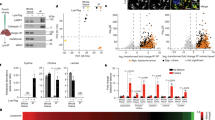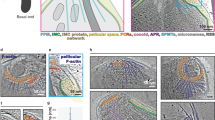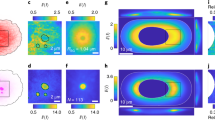Abstract
ACID phosphatase has been localized by Gomori's technique in the form of vesicular bodies (v; Fig. 1) and solid spherules (s; Fig. 1) among the mitral and the tufted cells of the olfactory lobe of the rat and bat. Such inclusions vary in number and distribution in the mitral and tufted cells (Figs. 1–6). In some cells the granules are limited in number and are seen lying on one side of the nucleus (n; Fig. 2). There is polarization on the side from which the processes arise. Positive filamentous bodies occur in such cells (f; Fig. 2). It has been established that in neurons the acid phosphatase positive granules represent the lysosomes and they originate from the Golgi apparatus1; thus it is possible that the filamentous network may represent the part of the Golgi apparatus from where the lysosomes originate as often the lysosomes extend within the processes of the mitral cells (arrows PR; Figs. 1 and 2). In some of the processes, however, the acid phosphatase positive lysosomes are not seen (PR; Fig. 3) and in such cases the lysosomes are restricted to the main bodies. Figs. 4 and 5 show stages of the distribution of the lysosomes of the tufted cells of the bat in the main bodies (TC; Figs. 4 and 5), as well as along the entire lengths of their processes (arrows PR; Figs. 4 and 5). In Fig. 4 the two processes of the tufted cells seem to meet (within circle) and the acid phosphatase bodies are evenly distributed along the entire length of the two processes. In a low power microphotograph of a mitral cell of the rat the entire process (PR; Fig. 6) from the point of emergence at the mitral cell (ML; Fig. 6) to the point of fusion with the glomerules (GL; Fig. 6) is seen studded with the acid phosphatase positive granules.
This is a preview of subscription content, access via your institution
Access options
Subscribe to this journal
Receive 51 print issues and online access
$199.00 per year
only $3.90 per issue
Buy this article
- Purchase on SpringerLink
- Instant access to full article PDF
Prices may be subject to local taxes which are calculated during checkout
Similar content being viewed by others
References
Novikoff, A. B., in The Cell, Biochemistry, Physiology, Morphology (edit. by Brachet, J., and Mirsky, E.), 2 (Academic Press, New York, 1961).
Hyden, H., in The Cell, Biochemistry, Physiology, Morphology (edit. by Brachet, J., and Mirsky, E.), 4, Pt. 1 (Academic Press, New York, 1960).
Covell, W. P., and Scott, G. H., Anat. Rec., 38, 377 (1928).
Koenig, H., Nature, 195, 782 (1962).
Eranko, O., Acta Physiol. Scand., 24, 1 (1951).
Kokko, A., Acta Physiol. Scand., 66, suppl., 1 (1965).
Pearse, A. G. E., Histochemistry, Theoretical and Applied (J. and A. Churchill, London, 1961).
Singer, M., in Progress in Brain Research, 13, 228 (1964).
Bodian, D., Proc. US Nat. Acad. Sci., 53, 418 (1965).
Gray, E. G., in Electron Microscopic Anatomy (edit. by Kurtz, S. M.), 369 (Academic Press, New York, 1964).
Pappas, G. D., and Purpura, D. P., Exp. Neurol., 4, 507 (1961).
Bogoch, S., Neurology, 10, 439 (1960).
McIlwain, H., Biochem. J., 78, 24 (1961).
Pope, A., et. al., J. Neurophysiol., 19, 259 (1956).
Tewari, H. B., and Bourne, G. H., J. Histochem. Cytochem., 11, 116 (1963).
Author information
Authors and Affiliations
Rights and permissions
About this article
Cite this article
SOOD, P., TEWARI, H. Lysosomes or Boutons?. Nature 215, 307–309 (1967). https://doi.org/10.1038/215307a0
Received:
Revised:
Issue date:
DOI: https://doi.org/10.1038/215307a0
This article is cited by
-
Electron cytochemistry of acid phosphatase in giant neurons of the molluskTritonia Diomedia
Neuroscience and Behavioral Physiology (1973)



